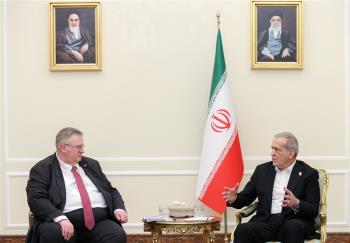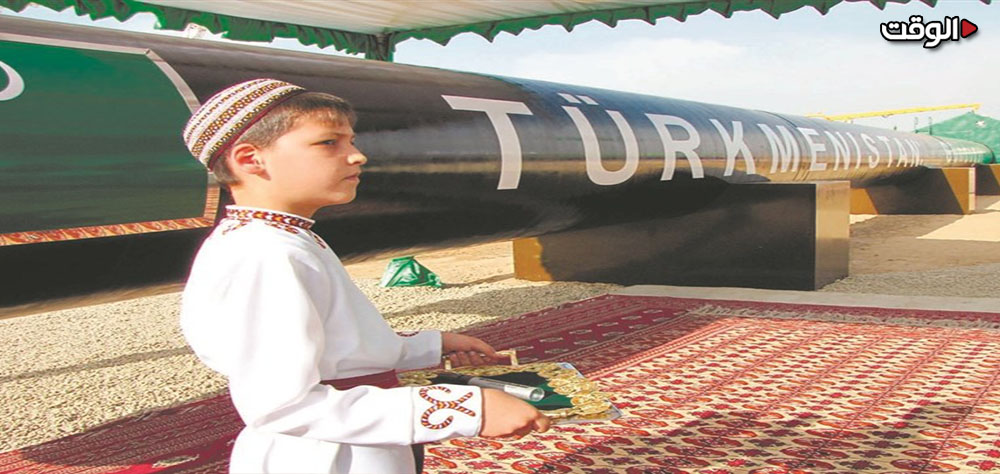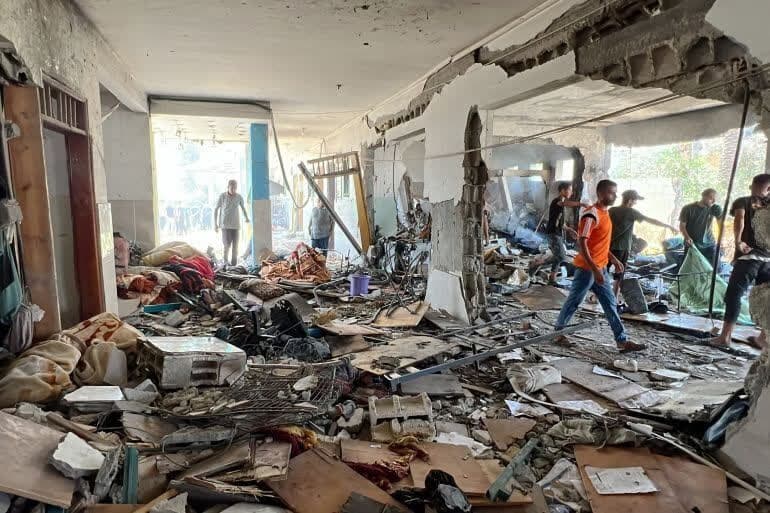Alwaght- Geopolitical developments, regional and international dynamics, and intensification of competition among the energy producers for larger shares from the emerging markets in recent years have given the Central Asian republics new opportunities to reduce their dependence on traditional markets and move out of the economic restrictions.
In this connection, in recent days an important agreement was reached on a regional level, bearing the potential to substantially influence the Central Asia and Caucasus gas equations.
According to the agreement, Turkmenistan' state gas company, Türkmengaz, and Turkey's BOTAŞ Petroleum Pipeline Corporation signed an agreement which will see Turkmenistan supplying gas to Turkey.
According to the Turkmenistan media reports, Ashgabat had earlier reached an agreement with Tehran on transferring Turkmenistan gas to Turkey via Iranian territory through a swap deal. The exports are set to start earlier in March.
Turkmen and Turkish officials have not yet provided information on the amount and price of Turkmenistan’s gas to Turkey, but in October last year, Murad Arkhayev, deputy head of Türkmengaz, announced that Ashgabat intends to increase natural gas exports to Iran to 40 billion cubic meters per year within the framework of agreements with Tehran and Ankara.
Gurbanguly Berdimuhamedow, chairman of the National Assembly of Turkmenistan, announced that his country also proposed building a power grid from Turkmenistan's Mari power plant to the Iranian border on the Mari-Mashhad route. Berdimuhamedow said that all necessary negotiations have been conducted and the relevant document has been signed, and the project will be implemented by Iranian companies.
Iran and Turkey are currently connected by a gas pipeline with a capacity of 14 billion cubic meters per year, but Turkey imports only 9.6 billion cubic meters of gas from Iran per year. Iran could receive about 14-18 billion cubic meters of gas from Turkmenistan annually.
Earlier, talks were conducted for Turkmenistan gas exports to Turkey through swap with Iran and Azerbaijan and the Turkish and Azerbaijani companies even signed a deal on the issue.
Also, according to the agreement signed in June 2022 between Yerevan, Ashgabat and Baku, it was agreed that about 1.5-2 billion cubic meters of Turkmenistan gas would be transported to Azerbaijan via Iran, and Iran would receive a portion of this gas as a transit right or swap fee.
In addition, in June 2024, the State Oil Company of the Republic of Azerbaijan (SOCAR) and BOTAS signed an agreement to cooperate in exporting Turkmen gas to Turkey via Azerbaijan and third countries.
Some experts believe that the infrastructure of the pipelines between Turkey and Iran needs to be updated and upgraded to receive Turkmenistan gas. Given that the Turkey-Iran gas pipeline is not fully utilized, Turkmenistan can export about 4-5 billion cubic meters of gas to Turkey via Iran without the need to update and increase the capacity of the existing pipeline. On the other hand, by expanding the pipelines to the borders of Turkmenistan, more gas will be transferred to Turkey in the shortest possible time.
Europe, the final destination of Turkmenistan gas
With the new Turkmenistan-Turkey agreement, Azerbaijan will increase its gas exports to Europe. Experts suggest that Turkey will consume Turkmenistan gas in its internal market and send to Europe part of Azerbaijan gas it is currently receiving for its internal market.
This gas swap deal was made after European countries had to seek to get Central Asian gas over the past decade to meet some of their energy needs. Therefore, the construction of a gas pipeline through the Caspian Sea bed was proposed, but due to the time-consuming nature and huge investment involved in this project, Europeans also gave up on this and turned to alternative routes, including receiving liquefied gas from countries such as Qatar and the US. In the current situation, Europeans also plan to meet their energy needs by transiting Turkmen gas to Turkey and from there to Europe.
So, Turkmenistan-Turkey gas swap bears considerable profits to Europe. This deal allows Europe to cut its traditional reliance on the Russian gas and hence ensure its energy security through its access to Turkmenistan-supplied gas. Also, entry of Turkmenistan gas to the European markets can step up competition in the energy market and lead to price cuts in favor of the end consumers.
This agreement could lead to the development of energy infrastructure and strengthening economic and political cooperation between Europe, Turkey, Iran and Turkmenistan, which would ultimately contribute to regional stability and security. It also helps European leaders in their vision to provide more sustainable and diverse energy and improve energy security and stability in the continent.
Since it is expected that Europe will have challenges with the US under Donald Trump, the European Union is seeking to diversify its energy suppliers to escape Washington’s pressure. After the war in Ukraine broke out, when Russian gas exports to Europe were cut off, Washington took advantage of this opportunity and, by taking over the EU market, sold its gas to European partners at a four-fold price, arousing the ire of the European leaders. Therefore, Trump, who is seeking to extort his allies by imposing tariffs on European goods, is not unlikely to use the oil and gas lever to pressure the Europeans in the future.
Defying Trump's anti-Iranian "maximum pressure" campaign
With Trump once again embarking on the "maximum pressure" policy against Iran and trying to remove Tehran from the regional and global energy markets, the gas swap deal between Turkmenistan and Turkey can have important effects in failure of the Trump's anti-Iranian push.
Strengthening the Iranian role as a key regional transit route, the swap agreement will boost Iran's geopolitical capacities in energy sector.
In addition, this agreement could neutralize the effects of Western sanctions and create alternative routes for Iran's international trade. It would also allow Iran to gain significant economic benefits by receiving transit rights and utilizing existing infrastructure. This could help improve the country's economy and reduce its dependence on sanctioned revenue sources.
Furthermore, by receiving Turkey-bound gas from Turkmenistan, Iran can meet part of its internal needs and therefore ensure security of its energy exports.
The implementation of this agreement will also strengthen Iran's interactions with neighboring countries such as Turkmenistan and Turkey and lead to improved political and economic relations with these countries. So, these energy agreements can be considered as a long-term project that in the future will turn Iran, Central Asia, and the Caucasus into energy hubs in the world by increasing gas transit and even building pipelines to facilitate the transfer of this rich energy to Europe.
Iran, with gas reverse of 42 trillion cubic meters, and Turkmenistan, with 7 trillion cubic meters, can have a key role in meeting European and even East Asias gas needs, and therefore, with development of these transit corridors, Iran can be a linking ring between the East and the West.
Additionally, gas swap via Iran can weaken other rival projects like Trans-Caspian Gas Pipeline and improve the Iranian position in the energy markets.
Such agreements show that elimination of Iran from energy markets is infeasible and as maximum pressure met its failure in the first administration of Trump, it will lose to Iran as it fails to cut Iran from world markets.



























